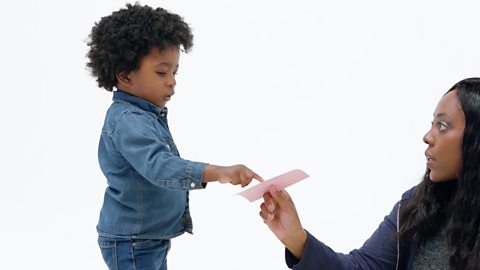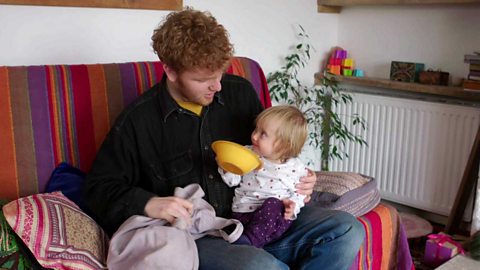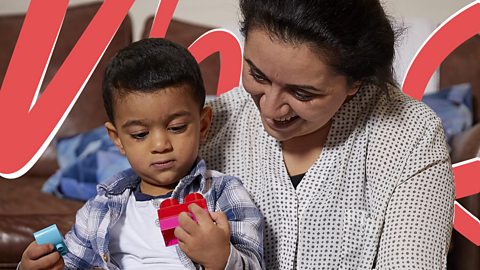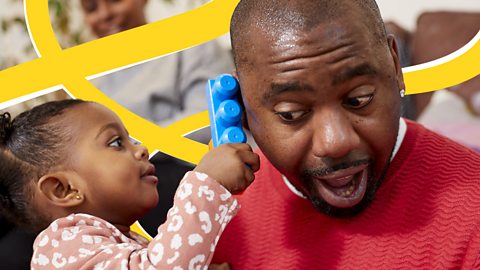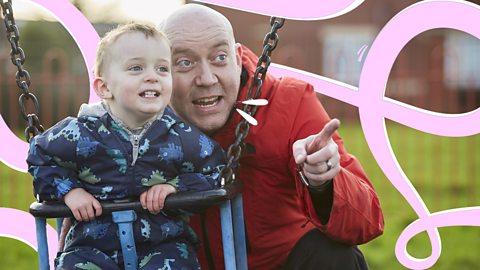When children attempt to communicate, one of the best things you can do to build their learning is to reply to them, adding detail and building longer sentences and phrases.
Watch the film below to see how different families manage this at different stages in their children's development.
How to help children build longer sentences
If your child says the odd singular word, you can respond to by using that word in a phrase. So if they were to say 'dog', you might say 'it's a big dog' or 'it's a fluffy dog'.
Similarly, if they were to use a sound or gesture, you can follow what they're interested in and make a best guess at what they're trying to say, and then form a short phrase around that word. So if they made a sound and gestured at a teddy, you might say 'that's teddy, he's sitting in the chair'.
'What's in the bag?' games for expanding language
'What's in the bag?' games create a great opportunity to model longer phrases and sentences for children.
Place a number of objects from around the house in a bag or pillowcase.
Build anticipation by saying 'shake, shake, shake… what's in the bag?', then pull out an item.
Can your child name the item? If they do, build on it by describing it further in a short phrase. So if you were to pull out a sock, you could say 'it's daddy's football sock'.

In case you missed it
What first words are common and why?
An article explaining how first words develop and which are likely to be children's first words.

